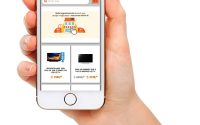6 Mobile App Marketing Trends you need to Boost Conversions

Here and there we hear that mobile apps are losing their positions giving way to messenger bots. It is hard to disagree that the apps market is visibly transforming. Yet, it is far too early to farewell them. They still are the great conversion engine for the small businesses and users are also seem far from the refusing of the apps as such. The question is how to catch the wave of the latest trends and make your app up-to-date and up-to-needs of your users. Here you’ll find our insights about the tendencies that should shape your app marketing strategy in 2017.
1. Shift your focus from the installs to engagement
This one is rather a principle than a trend. The thing is, the user’s perception of the digital tools as well as the user’s portrait has changed. If a couple years ago people could use the same apps out of habit, now we need to win them over daily. Kind of the 50 First Dates in life. Today people have a wide choice of apps and they simply ignore those that stop endeavoring. According to DigitalContextNext, a statistic is dramatic: a week after downloading an app only 10-12 percent of users are still active. After a month the number decreases to 4-5 percent.

Source: Cleveroad
For you, it means that the purpose of your marketing strategy cannot be limited to acquisitions and activations. Engagement and retention become your long-term reference points. And basically, all the app marketing trends of this year are working in this direction.
2. Personalization, localization and being close
We hear a lot about personalization but quite rare understand what exactly it means. Well, starting from the beginning, there are ways to retain your users’ interest to your app. According to the Localytics, push and in-app messages have proven their effectiveness last year. However, they work as splendid as precisely they target the user segmentation. It means, that they should be thematized and give the information customized to every individual user.
Three basic ways to start segmenting the notifications are the following:
- Use the personal information that users give while onboarding. What you need is to build a clever onboarding process and manage to get the information that works for you. For instance, a fashion app should know a user’s favorite style.
- Localize your services. Based on location you can send relevant information about upcoming events, sales or local news, depend on the nature of your product. SXSW program might not be that interesting to someone in Philly as to Texas-based innovators. LBS is gaining its momentum this year in all possible direction: from the translated version of the app content to the localized push notifications.
- Take into account the user’s lifecycle within your app. Learn how they proceed and build your engagement program according to their chain of moves.
Personalized experience makes us feel cared and comfortable. And it basically what defines a good app for us among its competitors. So in 2017, you need to get to know your audience well. Analyze, analyze and then analyze again. Follow the micro-changes in the user’s behavior, try A/B testing, experiment. Finally, learn from the mistakes of your competitors.
To be on the same wavelength with your users you need to know their pains and troubles and to be the first one with the solution.
3. Safety is your starting point
Mobile app development must start from the safety concerns. One of the main reasons for users to stop using or delete an app is security and privacy risks. With the development of apps functions, we see the deepening of personalization. It’s really what makes user stay and at the same time, makes them vulnerable. The apps in our smartphone contain our personal data, the information about our accounts and credit cards. Basically, about all our lives and loves. So the question of security become top-priority for the apps’ developers and owners. According to the Marketing Charts stats, more than a half of all users simply delete an app that they are not confident in. In other words, no matter how useful and responsive your app is, any users’ privacy concerns will nullify your efforts.

Source: Marketing Charts
4. Implementation of AR and VR technologies for Conversions
Before Pokemon Go fever augmented reality seemed rather as something outlandish for apps then a must-try technology. However, right after the game breakthrough thousands of apps made AR an important part of their product. For example, WallaMe messenger, design app Amicasa or edutainment apps like Transparent Earth or Spyglass. 2017 is time to think how can AR contribute to your users and boost your product performance. Get Social insists that it is one of the key app marketing trends to see flourishing this year. In the graphic below you can see which industries will benefit the most from the use of AR and VR:

Source: ValueCoders
5. Growing popularity of wearable devices
Besides, you should not limit apps to the mobile platforms. The Internet of Things is on its way to the top and now it is the right time to include wearable devices to your strategy. The market of such devices is growing and now you hardly find a person who is jogging without fitness tracker or smartwatch.
Altogether, one of the central tendencies of the year is the need in omnichannel experience. So build your marketing strategy considering mobile, web, social and wearable platforms as parts of your game.
6. Spread of AI technologies
AI technologies have already become a part of our routine and seem to keep the pace in 2017. According to TechBeacon, AI shapes the future of the app marketing. It not only helps to provide smooth personalization but also enriches user’s experience. For example, shop app users enjoy customized assortment of the items offered by AI. Lots of users find voice guidance helpful for the in-app navigation. Basically, artificial intelligence gives nearly endless opportunities to provide unique app service.
Conclusion
The key trend of this year is a global shift in marketing goals from acquisitions to retention. Among the instruments that help to reach the desired level of the loyal audience are advanced personalisation, LBS, AI, augmented and virtual reality features. Besides, security plays a paramount role in making people trust your app. In general, the app market keeps growing in 2017 both in terms of its spread and revenue.
SUBSCRIBE TO OUR NEWSLETTER
Signup to our monthly newsletter to get the best of our content with the latest
Conversion and A/B Testing resources rightin your inbox.


